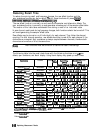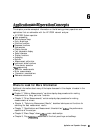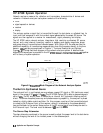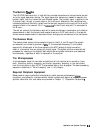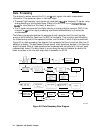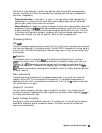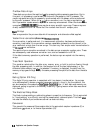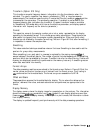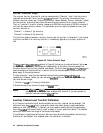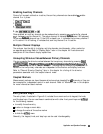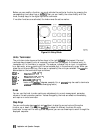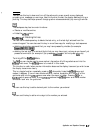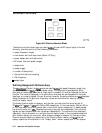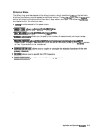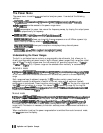
Transform (Option 010 Only)
This transform converts frequency domain information into the time domain when it is
activated. The results resemble time domain reflectometry (TDR) or impulse-response
measurements The transform uses the chirp-Z inverse fast Fourier transform
(FFI’)
algorithm
to accomplish the conversion. The windowing operation, if enabled, is performed on the
frequency domain data just before the transform. (A special transform mode is available
to “demodulate” CW sweep data, with time as the stimulus parameter, and display spectral
information with frequency as the stimulus parameter.)
Format
This operation converts the complex number pairs into a scalar representation for display,
according to the selected format. This includes group delay calculations. These formats are
often easier to interpret than the complex number representation. (Polar and Smith chart
formats are not affected by the scalar formatting.) Notice in Figure 6-2 that after formatting, it
is impossible to recover the complex data.
Smoothing
This noise reduction technique smoothes noise on the trace. Smoothing is also used to set the
aperture for group delay measurements.
When smoothing is on, each point in a sweep is replaced by the moving average value of
several adjacent (formatted) points. The number of points included depends on the smoothing
aperture, which can be selected by the user. The effect is similar to video filtering. If data and
memory are displayed, smoothing is performed on the memory trace only if smoothing was on
when data was stored into memory.
Format Arrays
The data processing results are now stored in the format arrays. Notice in Figure 6-2 that the
marker values and marker functions are all derived from the format arrays. Limit testing is
also
performed on the formatted data. The format arrays are accessible via HP-IB.
Offset and Scale
These operations prepare the formatted data for display. This is where the reference line
position, reference line value, and scale calculations are performed, as appropriate to the
format.
Display Memory
The display memory stores the display image for presentation on the analyzer. The information
stored includes
graticules,
annotation, and softkey labels If user display graphics are written,
these are
also
stored in display memory. When a print or plot is made, the information is taken
from display memory.
The display is updated frequently and synchronously with the data processing operations.
Application and Operation Concepts
6-7



